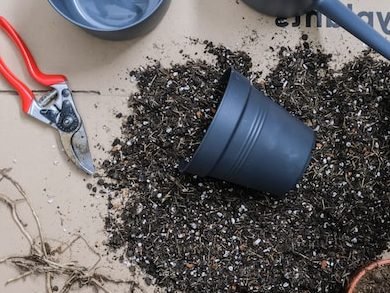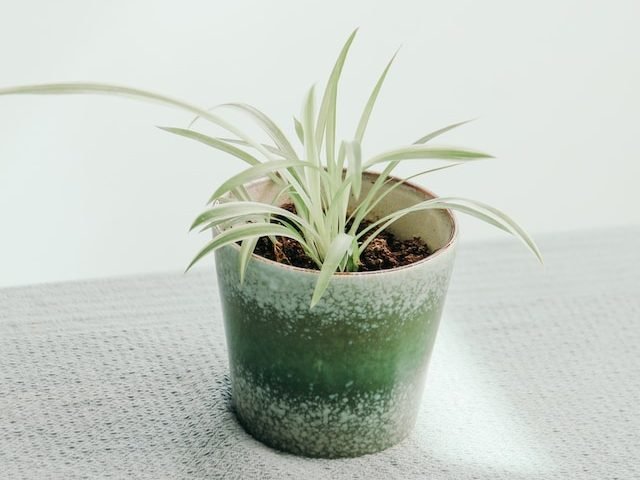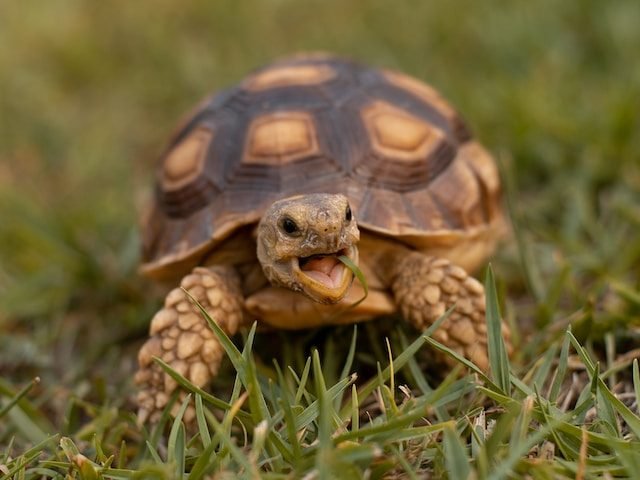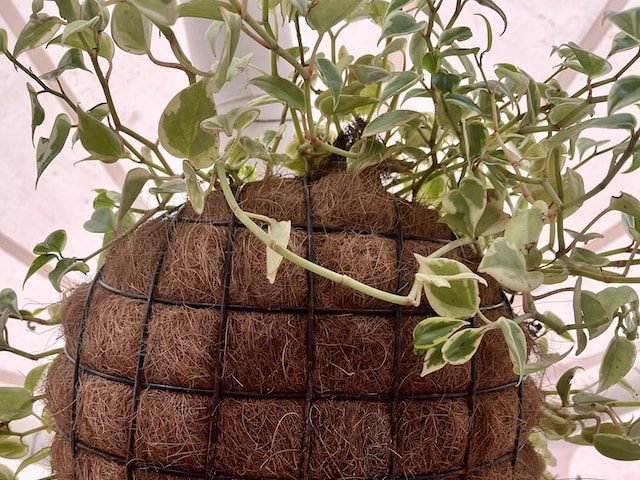Composting Eggshells

Ever wondered how you can give your houseplants that much-needed boost? Have you given thought to eggshells? Yes, you heard right, eggshells.
Eggshells can actually be a great nutrient boost for your houseplants if used in the right way. Below we will go through everything you need to know in terms of why, how and when to use them for your houseplants.
Contents
- Nutritional Value of Eggshells for Plant Growth
- How Eggshells Improve Soil Drainage
- Eggshells as a Natural Pest Deterrent
- How to Prepare Eggshells for Houseplants
- Adding Eggshells to your Houseplants Soil
- Dos and Don’ts of Using Eggshells in Houseplant Soil
- Common Mistakes to Avoid When Using Eggshells
- Alternative Ways to Utilize Eggshells for Houseplants
- Frequently Asked Questions about Using Eggshells in Plant Soil
Nutritional Value of Eggshells for Plant Growth
Eggshells are rich in a mineral that plants love – calcium. This nutrient plays an instrumental role in cell wall structure and also aids in cell formation and growth.
Without sufficient calcium, the plants can experience stunted growth or withered tips and edges.
Other Minerals Found in Eggshells
Apart from calcium, eggshells also house other essential minerals for plant growth: phosphorus, potassium, and magnesium.
When incorporated into soil, these minerals can help improve the overall plant growth and vigor.
- Phosphorus: It’s a key player in the process of photosynthesis, helps with cell division, and plays a role in plant growth. It can encourage blooming and root growth as well.
- Potassium: Aiding in photosynthesis and protein synthesis, potassium is critical for plant growth. It also strengthens the plants, increasing their resistance to diseases and pests.
- Magnesium: This mineral is a part of chlorophyll and crucial for photosynthesis. A lack of magnesium can lead to plant discoloration, also known as chlorosis.
How Eggshells Improve Soil Drainage
Eggshells are primarily composed of calcium carbonate, also found in lime, which is commonly used to condition soil.
Essentially, the coarse-ground eggshells create extra space in between the soil particles. This presents an opportunity for water to circulate more freely and ultimately drain better.
In essence, you’re significantly reducing the chances of waterlogging, which can easily cause root rot in your houseplants which is one of the biggest killers of houseplants around.
Eggshells as a Natural Pest Deterrent
Eggshells are a fantastic natural pest deterrent for houseplants, and they work in two main ways.
Firstly, they deter pests due to their sharp edges which pests absolutely hate!
Secondly, calcium being a crucial nutrient in eggshells, most pests find it too tough to digest. Both these reasons result in a pest-free, healthier plant without you having to rely on harsh chemicals.
How to Prepare Eggshells for Houseplants
Cleaning Your Eggshells
First, rinse the eggshells under warm water to remove any leftover egg. Look out for any residual egg yolk or egg white because these could potentially attract pests.
It’s best to be thorough and make sure the eggshells are sparkling clean.
Drying Your Eggshells
Next, you’ll want to thoroughly dry them. This can be done in two ways: air drying or oven drying. Air drying means leaving your eggshells out on a paper towel or tray, typically for about 24 hours but popping them in the oven is a little quicker.
Simply preheat the oven to a relatively low temperature, about 200 degrees Fahrenheit, then place the eggshells in a single layer on a baking sheet. After 10 minutes, your eggshells should be dry.
Crushing Your Eggshells
Once your eggshells are dry, crushing them is the final step. The finer you can get your eggshells, the better.
This increases the surface area and maximizes the potential for your plants to absorb the nutrients within.
Use a blender, coffee grinder, or even just your hands to crush the eggshells into a fine powder.
Adding Eggshells to your Houseplants Soil
Now that you’ve successfully prepared your eggshells, it’s time to integrate them into your houseplants’ soil.
Incorporating Eggshells into the Soil
Fortunately, adding eggshells to your plant soil is a straightforward task. You can start by sprinkling the crushed eggshells around your plants.
However, just scattering the shells on the soil’s surface often is not enough to get the full benefit. You’ll need to blend them into the top layer of your soil thoroughly, ensuring even distribution. This integration allows the nutrients to seep into the roots more effectively.
Composting with Eggshells
Alternatively, you can add your crushed eggshells to a compost pile or bin, enriching the compost with all the nutrients eggshells offer. Later, when you use this compost for your houseplants, it provides a balanced, nutrient-rich ecosystem encouraging healthy growth.
Creating an Eggshell Potting Mix
You could also make an eggshell potting mix! Mix the crushed eggshells with other organic materials like peat moss or compost. This combination increases the soil’s nutrient content and aeration, which significantly improves plant health.
Dos and Don’ts of Using Eggshells in Houseplant Soil
Do: Rinse and Dry Your Eggshells
We always recommend giving your eggshells a proper rinse to remove any egg residue. Post-rinsing, ensure you dry them out completely as the drying process helps to prevent mold formation, which will thank you later.
Do: Watch Out for Over-Fertilization
Even with the great nutrients present in eggshells, over-application can be harmful. It can bring about a condition known as ‘nutrient burn’ in the root system.
Don’t: Neglect Composting
If you’re into composting, don’t forget to add eggshells! They can balance your compost heap’s pH levels and enrich it with essential minerals, making your compost a well-rounded fertilizer for your houseplants.
Common Mistakes to Avoid When Using Eggshells
Not Crushing Eggshells Small Enough
Common mistake number one: not crushing your eggshells small enough.
You may feel it’s okay to simply crumble them by hand and call it done. However, large chunks of eggshell decompose at a slower pace, becoming effective too late for your plants’ nutritional needs. It’s essential that you crush your eggshells into a powdery texture to speed up the decomposition process.
The only benefit of having larger eggshell pieces is to be more of a deterrent to pests. But if it’s nutrients you’re after, crush then into a powder.
Overusing Eggshells
Another mistake made by many is overusing eggshells as moderation is key. Too much can lead to an excess of calcium, causing deficiencies of other essential nutrients in the soil.
Always ensure you’re giving your plants a balanced diet, not purely eggshell-derived nutrients.
Skipping the Washing Step
Unwashed eggshells can host harmful bacteria, such as salmonella, which are not something you want in your precious plant soil.
So, always make sure to rinse and dry your eggshells properly before using them in your soil mix.
Improper Storage of Crushed Eggshells
Storage is just as important as preparation. If your finely crushed eggshells are improperly stored before being added to your houseplants, they could develop mold or attract pests.
It’s best to store your eggshell powder in an airtight container, placed in a dry and cool environment for optimal preservation.
Alternative Ways to Utilize Eggshells for Houseplants
When it comes to harnessing the potential of eggshells for your houseplants, there are more ways than simply incorporating crushed shells into your soil. Here are some of our favorites:
Eggshell Plant Tea
It’s a nutritious mixture intended for your plants! To make this liquid, you add the crushed eggshells to boiling water and let it steep overnight.
After straining out the eggshells in the morning, you have a calcium-rich “tea” that’s ready to irrigate your plants!
Seed-Starting Pots
Why not use your eggshells as little pots for starting seeds? Admittedly, the process requires a bit more preparation as the eggshells need to be cleaned and have a hole punctured at the bottom to allow for drainage, but it’s worth it.
Once you’ve germinated the seed and it’s begun to grow, the entire plant (eggshell pot and all) can be planted in soil.
Eggshell Mulch
By crushing the eggshells into tiny pieces, you can turn it into a type of mulch that you spread on top of your soil. This method is excellent for preventing moisture loss and deterring pests. Additionally, as the eggshell mulch slowly decomposes, it contributes its calcium content to the soil.
Frequently Asked Questions about Using Eggshells in Plant Soil
Are eggshells beneficial for all types of houseplants?
Yes, most houseplants benefit from eggshell use. The calcium carbonate in eggshells helps to nourish the plant’s cells.
However, you should ensure that the soil pH does not get too high, especially for acid-loving plants like azaleas and rhododendrons, for which eggshells may not be the best choice.
How many eggshells are required for each plant?
This depends on the size of the plant and its specific nutritional needs. Generally, a light sprinkling of crushed eggshells around the base of your plant every 2-3 months is suffecient.
For vegetable garden beds, six crushed eggshells per square foot is an often-recommended ratio.
What are the signs of over-fertilization from eggshells?
Signs of over-fertilization include yellowing or brown-tipped leaves, slowed growth, or wilted plants even with sufficient watering.
If you detect any of these signs after adding eggshells, try reducing the amount you use, or remove the top layer of soil and replace it with fresh, eggshell-free compost.
If you are also adding a liquid fertilizer, it may be that you are over-fertilizing by adding too much of this, rather than the eggshells being the issue. Make sure to read the label on the fertilizer bottle and use that as a maximum guide.
Often we will fertilize less than the recommended strenght just to be on the safe side.
Can eggshells replace commercial fertilizers?
While eggshells can definitely contribute a wealth of nutrients to your plant’s soil, they may not cover the complete spectrum of nutrients needed by a plant, as commercial fertilizers do.
So, while you can boost your plant’s health with eggshells, a balanced diet might still require additional fertilizers.
What about raw eggshells versus cooked ones for houseplants?
Both raw and cooked eggshells can be utilized, as long as they are cleaned and dried thoroughly before grinding to prevent any potential health risks.
However, if you’re using eggshells from boiled eggs, ensure no salt or additives came into contact with the shell, as these could potentially harm your plants.
What is a good method for storing crushed eggshells?
A clean, dry glass jar or plastic container with a tight-fitting lid is a good choice for storing your crushed eggshells. Be sure to store these containers in a dry, cool place to keep them fresh until you’re ready to use them.















